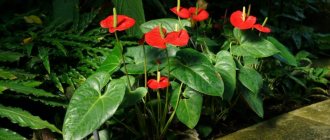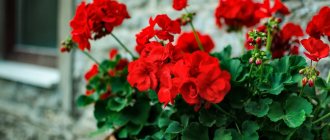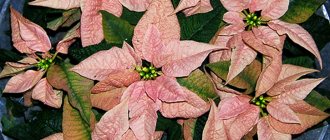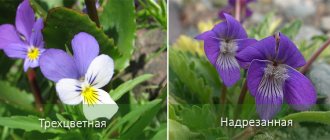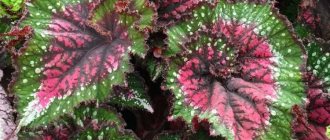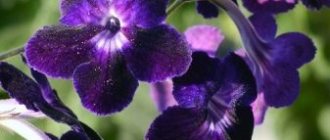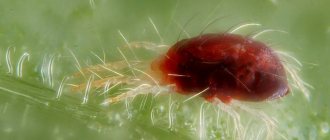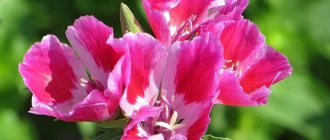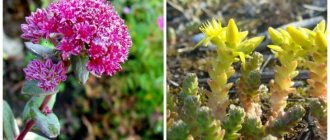Sedum is one of those plants that do not have bewitching beauty, but delight in their unusualness and grace. Thanks to its huge variety, succulents are used in landscape design to decorate alpine slides, mixborders and rockeries. Tall varieties of sedum look great in group plantings. What does this decorative perennial look like and how to properly care for it?
Popular varieties
Each variety of sedum has its own twist and is in demand among gardeners. However, there are varieties that have been popular for more than 5 years.
Sedum Kamchatka
A loose bush consisting of erect shoots 30-35 cm high. The length of the dark green elongated leaves is 4-5 cm. The edges at the base of the plate are smooth, and on the opposite - jagged. Yellow flowers up to 2 cm in diameter form dense inflorescences. The size of one umbrella is 11-13 cm. It enters the flowering phase in June and emerges after 2-3 weeks.
Sedum caramel Kamchatka
A perennial plant with vertical stems 20 cm high. The ellipsoid leaves have a blunt edge near the petiole and a toothed edge at the apex. Small flowers are orange-yellow. Corymbose inflorescences form in June and decorate the plants for 25-30 days.
Sedum purple carpet
A perennial herbaceous plant, which was discovered by the German botanist M. Bieberstein in the 19th century. The succulent is a compact bush 15-20 cm high and 40-50 cm in diameter. Densely leafy stems spread along the ground. Bright green oblong leaves are arranged in two rows.
The length of the plate is 5-6 cm, width - 3-4 cm. The flowers are red with pointed petals. Purple sedum blooms for 1.5-2 months, starting in the first half of summer. Succulent Sedum purpurea is grown from seeds according to the same principle as all succulents.
Sedum Eversa
Compact perennial shrub. By the beginning of autumn, the red-brown shoots become woody. The round, small leaves are bluish-gray and thick. Flowers, painted pink, are collected in inflorescences. The flowering period begins in July and lasts about two months. In autumn the plant sheds its leaves.
Sedum is beautiful
Perennial with creeping stems. The leaf blades are thick, turgorous, and bluish. Prefers to grow in soil made from leaf and turf soil, sand (1:1:2). Grow in low pots.
Transfer
Mature plants 4–5 years old require rejuvenation, replanting by dividing the bush . The soil should be light and well permeable to moisture.
Soil composition for prominent sedum:
- Sand -1 hour.
- Compost or humus – 1 tsp.
- Garden soil – 2 hours.
- Drainage made of brick chips, polystyrene foam or expanded clay.
The procedure is carried out in early spring. The mother bush is dug up for division. Each separated part must have healthy roots and 2 developed buds. Before planting, seedlings must be dried for 5–6 hours .
Tip : The cut areas are treated with disinfectants.
Planting sedum seedlings
Only patient gardeners can grow succulents using seeds. The process requires a number of manipulations, and lasts much longer than propagation using one of the vegetative methods.
Sedum growing from seeds when to plant? Planting of sedum seeds is carried out in March-first half of April according to the following plan:
Prepare the soil mixture. Mix leaf and turf soil, sand and peat in a ratio of 1:1:1:1. No matter what variety the sedum you like belongs to, sowing seeds for seedlings is carried out as follows:
- Place a handful of substrate on the bottom of the plate and level it. Seeds are sown on the surface of the soil and sprayed with water.
- The container is placed in a bag or covered with glass and sent to the refrigerator (vegetable section) for 2 weeks.
- Stratified seeds are sown in containers, and the soil is moistened with a spray bottle. To make it easy for tender seedlings to break through to the surface, the planting material is crushed over the surface of the substrate and sprinkled with a thin layer of sand.
- The container is covered with film or glass.
To prevent fungi from appearing on the soil and planting material, the minigreenhouse is ventilated from time to time. At room temperature, sedum seedlings make their way to the surface 2-4 weeks after sowing. Plants that have formed 1-2 true leaves are transplanted into separate containers.
2 weeks before the expected date of the next picking, the seedlings are hardened off. Young plants will experience less stress and will take root better in their new location if the time they spend outdoors is gradually increased. Hardening starts from 1-2 hours and continues up to 24 hours.
Planting to a permanent place is carried out in the third ten days of May. When propagating sedum by seeds, keep in mind that the plant will not bloom in the first summer.
For a flower like sedum, growing from seeds is one of the effective ways to get an exotic plant for your garden.
Possible problems
As mentioned above, sedum is a low-maintenance plant that is frost- and drought-resistant, and its cultivation usually does not cause any problems.
Occasionally, however, gardeners may notice that the leaves begin to wrinkle. This occurs due to lack of moisture. Lack of light will cause leaves to fall. Excessive fertilization will lead to the growth of shrubs and loss of their decorative qualities.
How to plant sedum in open ground
Whether the flower will take root or not depends on how the planting is done. But before you begin the decisive manipulation, you need to carefully prepare.
How to choose a seedling
The best place to buy sedum flowers is at a nursery. For planting, you should choose only healthy seedlings without mechanical damage and traces of diseases and pests. The leaves should be alive and turgor, and the soil in the container should be clean.
When choosing a plant, it is worth considering the fact that low-growing varieties are more suitable for creating living carpets, and tall ones are more suitable for single plantings.
In our nursery in Tatarstan you can purchase high-quality sedum seedlings for every taste. The company delivers orders throughout Russia, so you can buy sedum in Moscow or any other city if you are a wholesale buyer.
Selecting a location
Like most succulents, sedum grows well in sandy and rocky soils. Despite this, the plant can live on any other soil that drains water well. You should not plant a flower in an area with marshy soils or in lowlands where water often accumulates.
As for lighting, it is better to plant sedum in a well-lit place, unless the description of the purchased specimen says otherwise. It is undesirable for shrubs and trees to grow nearby.
Sedum planted in the shade quickly loses its decorative effect. The leaf blades become thinner and the stems become elongated.
Soil preparation
Most varieties of sedum are not demanding on the composition of the soil. At the same time, some ground cover varieties prefer to grow in garden soil rich in microelements, while others thrive in loam or sandstone.
For example, sedum sedum Purple carpet belongs to the first category, sedum prominent - to the second. Therefore, before buying the sedum you like, you need to find out whether it will be possible to fulfill the requirements of the plant.
A universal soil mixture for succulents is prepared from leaf and turf soil, sand, rotted manure mixed in a 1:1 ratio. A handful of wood ash is added to the finished substrate.
Landing dates
Sedum is planted in the second ten days of May, when the risk of return frosts is reduced to zero. In the southern regions, the favorable time comes earlier, and in the northern regions - later than the specified date.
The flower is planted following this pattern:
- At the selected location, dig holes with a diameter of 50 cm and a depth of 20 cm. To prevent plants from interfering with each other’s growth, 20 cm of free space is left between them.
- A layer of drainage material is placed at the bottom of the planting hole: pebbles, gravel or broken bricks. This will improve the outflow of water and prevent fungus from developing.
- The hole is filled 2/3 with soil mixture.
- The seedlings are placed in the center and the straightened roots are sprinkled with soil.
- The plant is watered abundantly.
Description
Saxifraga is a species of flowering plants belonging to the thistle family. It is a perennial succulent widely distributed in eastern China, Korea, and also Japan.
It can often be found growing wild on the plains. This is a fairly hardy plant that can be planted in any part of the garden and can even be grown in arid mountainous areas.
It received the name 'Prominent' because of its colorful flowers, which make it a real decoration of the garden.
Stonecrop is commonly known as "bunny cabbage" or "living grass."
Sedum is a large plant with lush inflorescences up to 25 cm in size. The color palette is especially striking: shades of white, lilac, lilac, pink and even purple will decorate your garden during the flowering period of this unique plant species.
The height of the plant varies from species to species. Some of them reach 35 cm in height, but others can grow up to 80 cm.
The variety also affects the time of flowering. The first flowers may appear as early as May, and the initially green inflorescences acquire a variety of colors that become more saturated in the fall. Does not suffer from severe frosts.
Sedum planting and care: propagation by vegetative methods
You can also get new plants using cuttings. To do this, a cutting is cut out from the center of a healthy mature shoot, so that 2-3 cm remains above the upper and below the lower bud.
The cuttings are planted in a loose, moist substrate and sprayed with a spray bottle as necessary.
During transplantation, sedum is propagated by dividing the bush. The dug plant is divided into 3-4 parts. Damaged roots are sprinkled with activated carbon powder and placed in a dark, dry place for 2-3 hours. After this, the bushes are planted in separate holes in a sunny area.
Medicinal properties of sedum prominent
The prominent sedum has medicinal properties and is used in folk medicine. The green parts and roots of the plant are used:
- for bleeding, wounds and burns;
- for pneumonia and bronchitis;
- for inflammation;
- for diseases of the kidneys and bladder;
- for anemia and anemia;
- with weak blood vessels and pressure surges;
- with slow digestion.
It is recommended to use decoctions and infusions based on the plant to increase immunity and remove toxins from the body. The products are beneficial for chronic fatigue and loss of strength.
How to care for sedum
Although care is virtually unimportant for plants like sedum, a succulent will look more beautiful if you give it a little attention. To do this, you need to carry out the following garden manipulations.
Watering
The first thing to remember: waterlogging is one of the causes of sedum pain. Therefore, you can water the succulent only with a moderate amount of water after the earthen ball has completely dried out. Adult specimens are even less demanding on the level of humidity: even in dry summers, rare watering is enough for them.
Top dressing
Sedum is absolutely undemanding in terms of soil nutrition. To make the plant lush and even more beautifully flowering, fertilizers are applied twice. Feeding scheme:
- Before flowering. A solution of cow manure or a handful of ammonium nitrate is added under the plants.
- After flowering. To replenish the supply of macro and microelements, sedum is fed with complex mineral fertilizers in accordance with the instructions.
It is impossible to apply nitrogen fertilizers more often, as this will have a bad effect on the plant’s resistance to low temperatures.
The main sign that the plant needs nutrients and sunlight is pale or yellowed leaves. If the condition does not improve after feeding, the flower is transplanted to a sunny place.
Weeding
Perennial sedum does not get along well with weeds in the same area, so they need to be pulled out immediately after they appear. So that the soil does not become crusty and is maximally saturated with oxygen, the soil around the flower is loosened. To decorate the flower, they surround it with bark or pebbles.
Transfer
The root system of the sedum lies in the upper layers of the soil and is not particularly powerful. Therefore, it is not recommended to frequently replant the plant from place to place. As a last resort, 1-2 picks per year are allowed. Rejuvenating sedum planting is carried out every 5 years.
Shelter for the winter
On the eve of cold weather, sedum is pruned. Heat-loving varieties are mulched and covered with lutrasil. As soon as full warmth arrives, the shelter is removed.
Whatever the variety of sedum, planting and caring for it in open ground does not require special skills or a lot of time. Even a busy person or an inexperienced summer resident can grow a succulent on their own plot.
Diseases and pests
Sedum is one of those plants that are practically not susceptible to diseases and pests. The development of bacteria is often caused by improper care.
Overwatering causes rot to damage the succulent. The main signs of the disease are gray or black spots on the entire surface part. The areas affected by bacteria are cut off with a sharp knife and destroyed, and the sedum itself is sprayed with a fungicide. Watering is carried out only after the soil has dried out.
Among insects, aphids, nematodes and weevils are dangerous for sedum.
- To prevent small black pests that damage leaves, plants are sprayed with a weak insecticide solution. Please note that a strong concentrate cannot be used as it will burn the delicate leaves.
- Nematodes live in the root and quickly destroy it. The appearance of unexpected guests can only be detected by the appearance of the above-ground part of the plant. Flowers with fading foliage are dug up along with a lump of earth and taken away from the site.
- Weevils that eat the fleshy leaves are collected in a bag and destroyed.
Possible difficulties
- On the north side of the house the bushes do not bloom, the leaves are small and turn pale.
- The stems become elongated due to lack of light, and the bush becomes loose and sloppy.
- Due to excessive feeding, the bushes lose their attractiveness, the inflorescences grow, and the stems may break off due to the weight of the flowers.
- In summer, bushes can be damaged by caterpillars. Spraying with Actelik is required.
- Thrips and aphids damage the tops of the bush. Treatment with insecticides will help.
- Young leaves are often attacked by the grooved weevil. Beetles should be removed after sunset by shaking them off the bushes.
- Due to dampness and cold, the bushes are affected by fungal infections, and rot may appear. Affected areas need to be cut off.
Sedum in landscape design
Due to the fact that there are a large number of varieties with very different characteristics, sedum is often used to create landscape designs. Here's how sedum varieties are used:
- Low-growing and creeping varieties are planted in mixborders and on hills.
- Ground cover sedum is ideal for creating living flower carpets, edging borders and paths.
- Tall varieties of sedum are planted in groups.
- Sedum is planted in flowerpots and pots that are hung on the porch and around the site.
